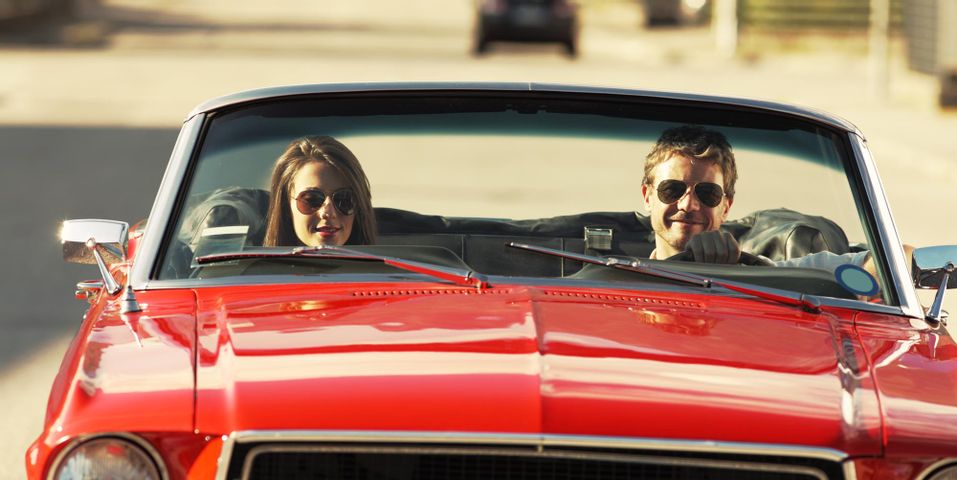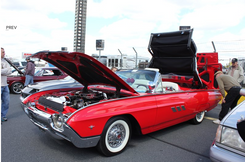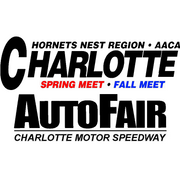What You Need to Know About the Muscle Car

Among the most notable milestones in the American automotive industry is the creation of the so-called muscle car. Decades after their invention, their beastly engines and imposing designs still make them highly desired by car enthusiasts. While classic muscle cars are not often seen on the roads these days, they’re not hard to find at a vintage auto show.
How Did Muscle Cars Come About?
Before their proliferation from the 1960s to 1970s, muscle cars trace their roots as far back as the 1920s. It was the era of prohibition and bootleggers needed fast vehicles to evade the police during a chase. They modified vehicles to boost speed, improve handling, and have more room for cargo. This inspired the very first muscle car, the 1949 Oldsmobile® Rocket 88. It had a powerful V-8 engine fitted inside a relatively small, light auto body.
The Rocket 88 faced competition from other car manufacturers, one of which was Chrysler® and their C-300. When introduced in 1955, it was marketed as “Hemi” for its hemispherical combustion chamber on its V-8 engine. Chevrolet joined the fray in 1955 and developed small-block V-8 engines for lightweight cars with lightning speeds but abysmal handling.
 As the popularity of muscle cars grew in the early 1960s, drag racing gained traction as well. Automakers like Ford®, Chevrolet®, General Motors®, and Chrysler introduced bigger V-8 engines and lighter bodies, with stronger caveats on safety for daily driving. From the 1964 Pontiac® Tempest GTO and 1966 Mustang Shelby GT350 to the 1969 Dodge® Charger Daytona and 1970 Plymouth® Superbird, it was indeed an era for the muscle cars.
As the popularity of muscle cars grew in the early 1960s, drag racing gained traction as well. Automakers like Ford®, Chevrolet®, General Motors®, and Chrysler introduced bigger V-8 engines and lighter bodies, with stronger caveats on safety for daily driving. From the 1964 Pontiac® Tempest GTO and 1966 Mustang Shelby GT350 to the 1969 Dodge® Charger Daytona and 1970 Plymouth® Superbird, it was indeed an era for the muscle cars.
How Is a Muscle Car Different From a Pony Car?
Muscle cars are light-bodied vehicles with big, high-performance engines. This disparate setup of high horsepower to weight ratio makes for faster vehicles. Not all powerful vehicles, however, are considered muscle cars. For instance, the 1964 Ford Mustang isn’t classified as one and falls into another category called pony cars. They have the same build but with less horsepower under the hood. The Mustang, Chevrolet Camaro, Dodge Challenger, and Plymouth Barracuda are some of the famous pony cars during the era that can still be seen in vintage auto shows.
Why Did the Market Decline?
The muscle car industry slowly downshifted in the early 1970s because of significant changes—ranging from fuel crisis and stricter emission regulations to shifting preferences and rising insurance rates. The price of owning muscle cars became exceedingly restrictive for the average consumer. Even with declining gas prices, vintage muscle cars aren’t environmentally friendly but are nonetheless beautiful to see up close at an auto show.
Even years after their heyday, muscle cars remain a beauty and beast for avid collectors and vintage enthusiasts. See more of them at the Charlotte AutoFair, the largest auto show in Mecklenburg County, NC. This three-day car exhibit and vintage auto show held every April has gathered buyers, sellers, and enthusiasts alike all over the country. Call (704) 841-1990 today or visit them online to learn more about the event.
About the Business
Have a question? Ask the experts!
Send your question

